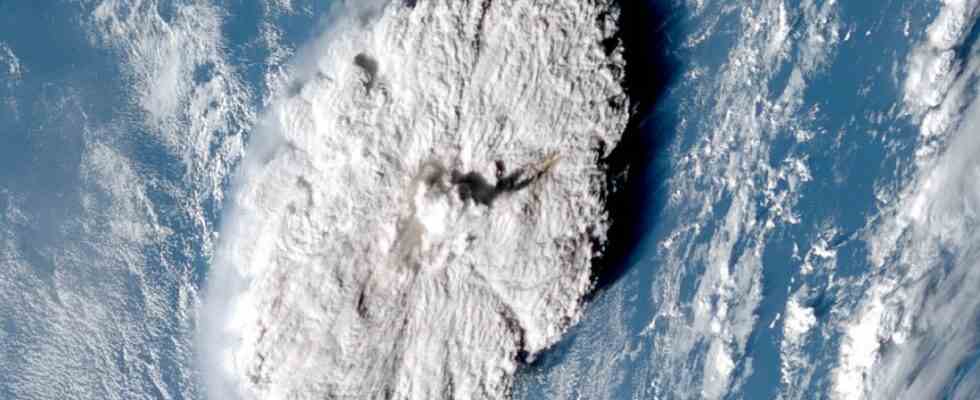Tonga’s volcanic eruption earlier this year produced the highest ash plume ever recorded on Earth. At 57 kilometers, the eruption column even penetrated the third layer of the earth’s atmosphere, the mesosphere. Researchers at the University of Oxford have now confirmed this assumption. The submarine volcano Hunga-Tonga-Hunga-Ha’apai erupted in mid-January and threw a gigantic cloud of ash and gas miles high. The research work, in which the Munich University of Applied Sciences was also involved, was in the science journal Science released.
The eruption unleashed tsunami waves that sloshed onto shores even in Japan, Alaska and South America. After the eruption, there was little information from the Polynesian island nation, which is 2,300 kilometers northeast of New Zealand, for days. The kingdom of 107,000 people was covered with a thick layer of ash, which also polluted the drinking water. The Hunga-Tonga-Hunga-Ha’apai lies just 40 miles north of Tonga’s capital, Nuku’alofa, beneath the surface of the sea.
So far, however, the researchers have lacked a method to precisely measure how high the ash cloud was, according to a statement. The images taken by weather satellites every ten minutes, which documented the rapid changes in the cloud’s trajectory, together with the phenomenon known as the parallax effect, would now have made this possible.
Why did the Tonga cloud rise so high? And what exactly was it made of?
The results showed that the cloud reached a height of 57 kilometers at its highest extent. “This is significantly higher than the previous record holders,” the researchers said. In 1991, the Pinatubo volcano in the Philippines threw up the highest known eruption column measured by satellite. It was said to have reached a height of 40 kilometers. The El Chichón cloud in Mexico rose about 31 kilometers in 1982.
The Hunga-Tonga-Hunga-Ha’apai eruption is the first observable evidence of a volcanic eruption whose material was injected through the stratosphere into the mesosphere, the team writes in Science. This begins about 50 kilometers above the earth’s surface.
“This is an extraordinary result as we have never seen such a high cloud of any kind before,” says lead author Simon Proud from the University of Oxford. In addition, due to the good satellite coverage, it is only now possible to calculate the height of an eruption column using the parallax method. “That wouldn’t have been possible a decade ago.” And yet many questions remain unanswered: Why did the Tonga cloud rise so high? What are the climatic effects of this eruption? And what exactly was the cloud made of?

